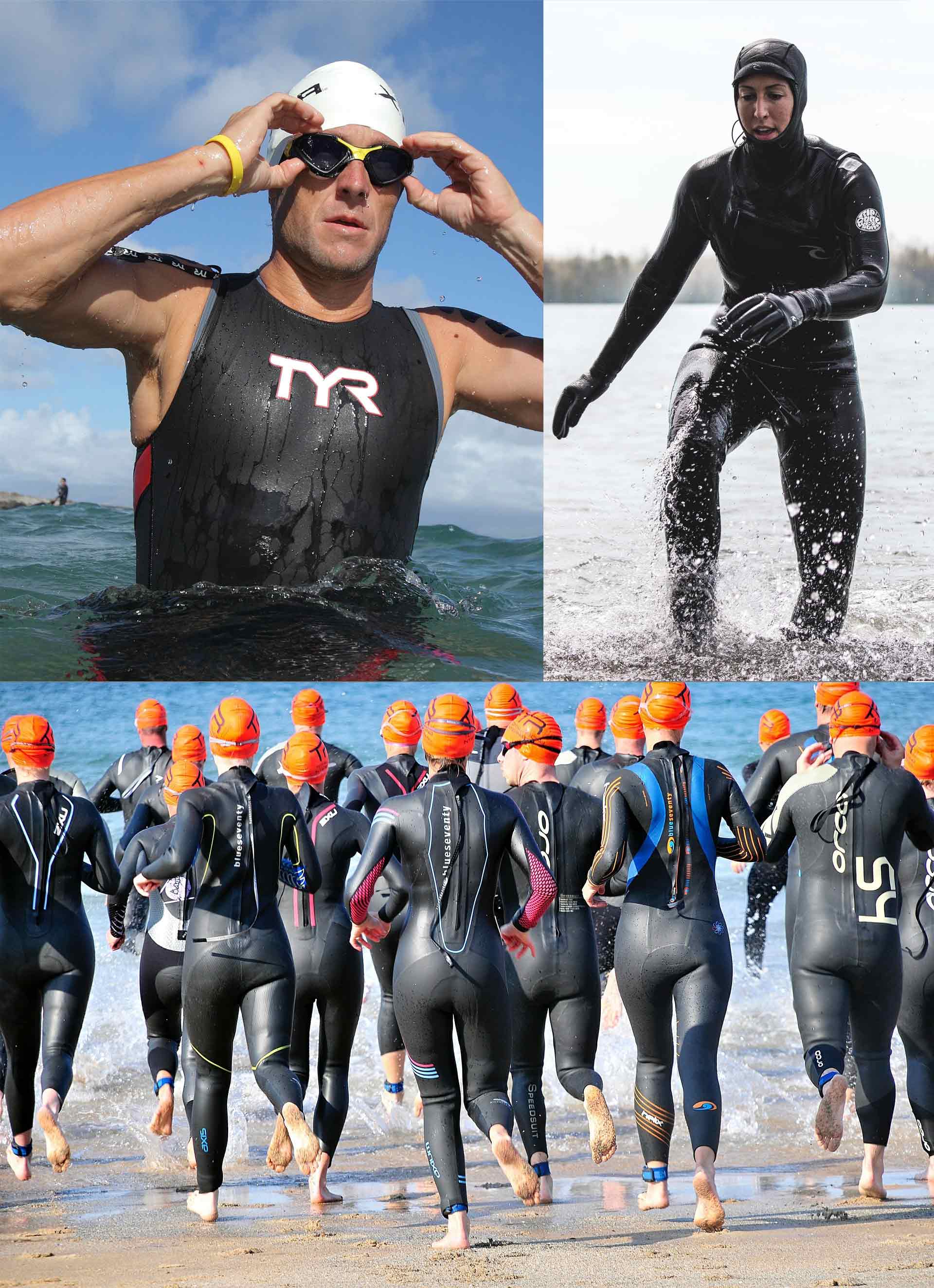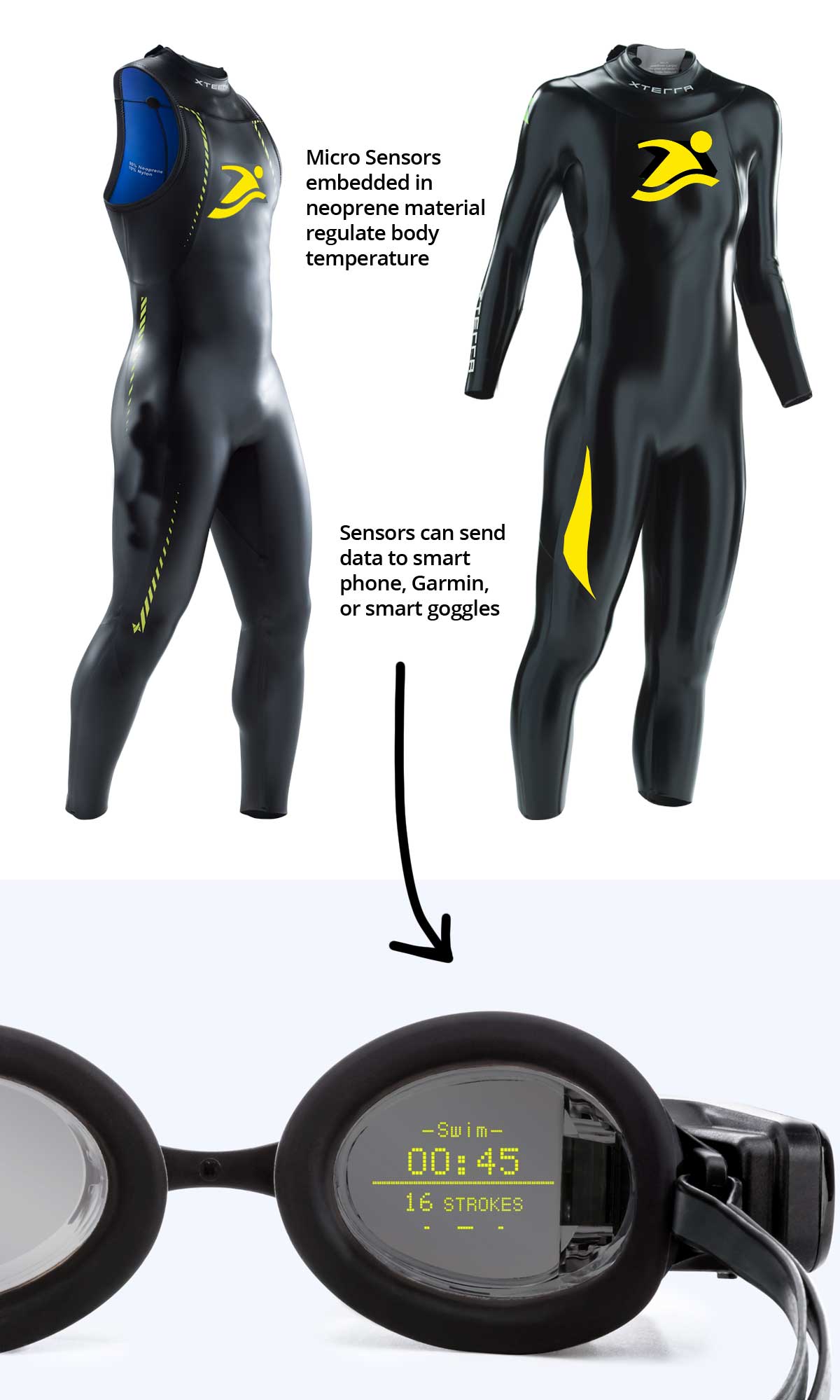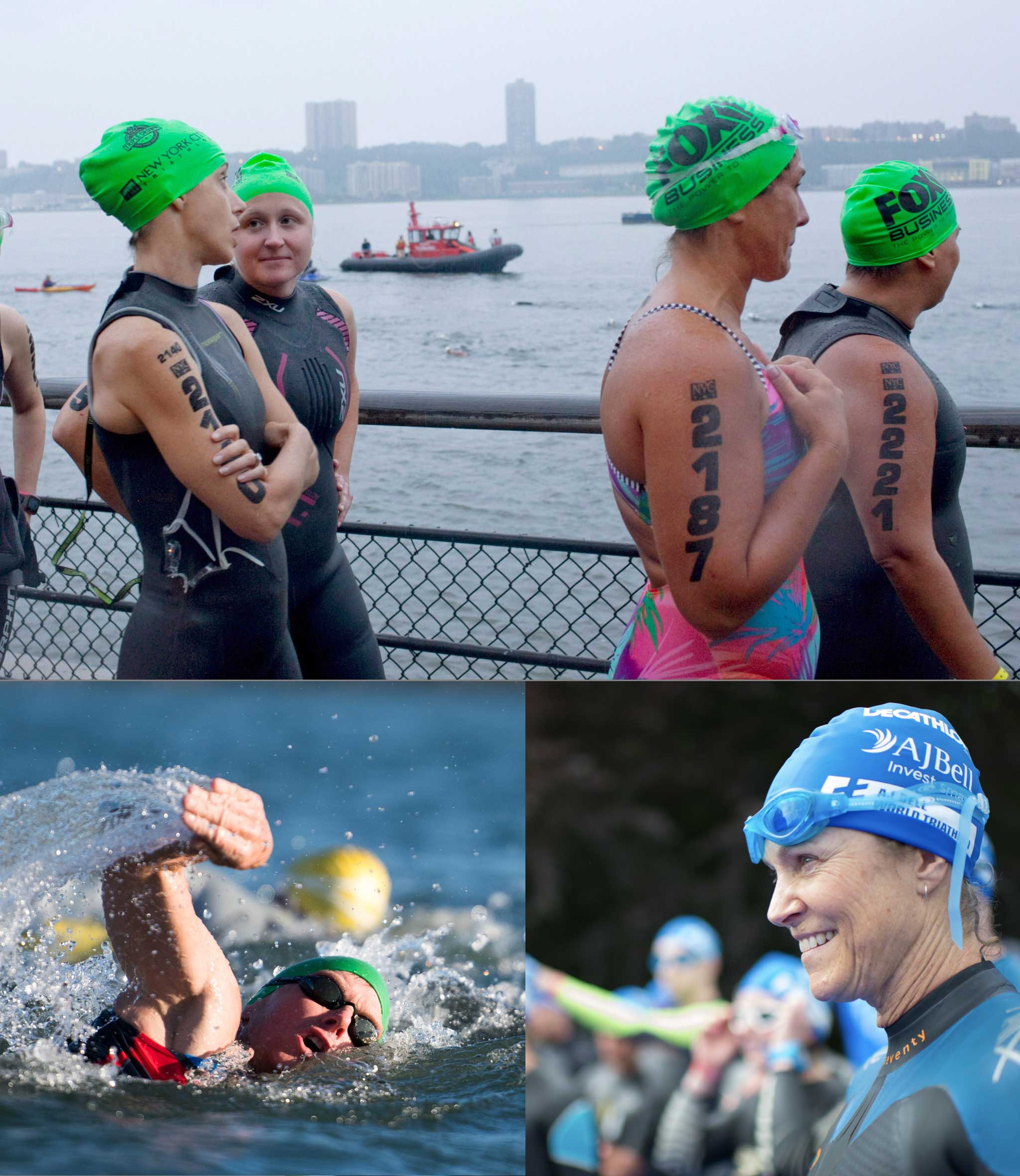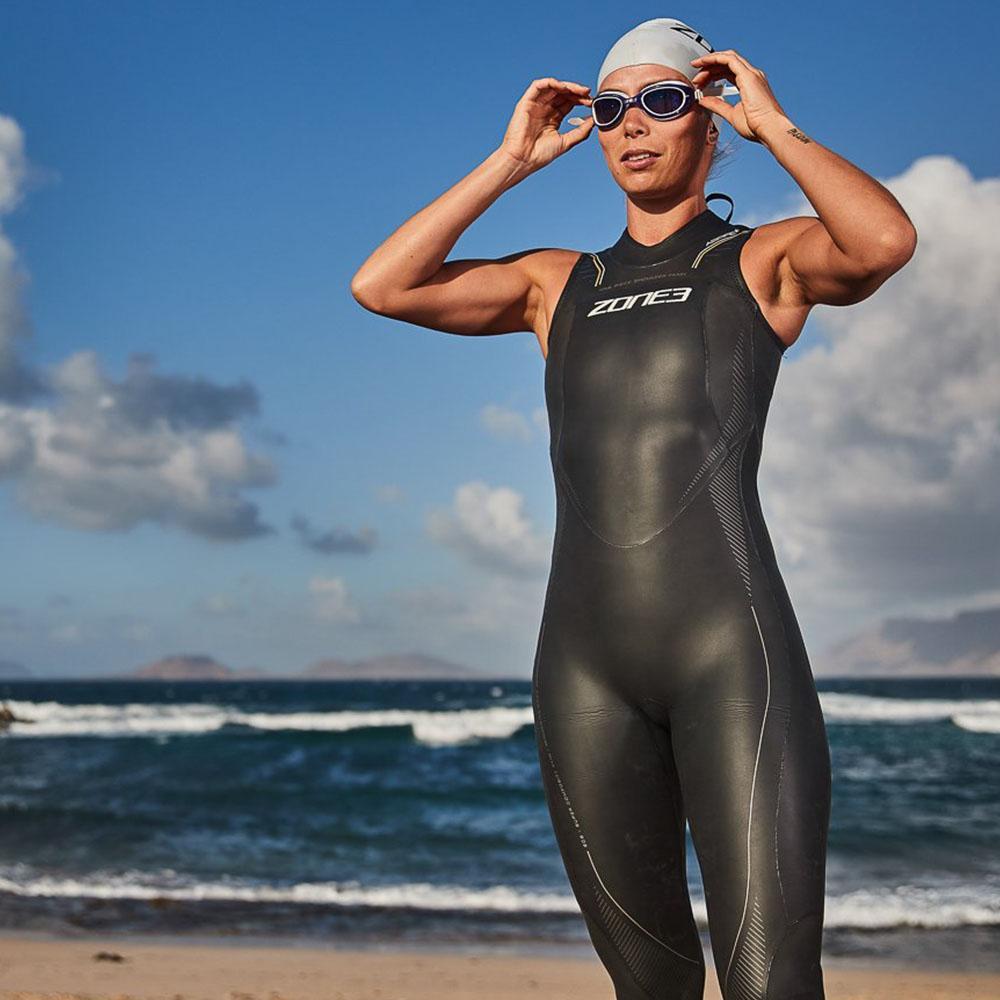
Having a wetsuit is a must for any athlete planning on doing an open water swim. However, there is a tremendous difference among the participants regarding age, size, body fat, and swimming ability in today's triathlons and open water swimming events. These factors affect an individual athlete's ability to withstand prolonged exposure to cold or warm water temperatures.
The possibility of hypothermia during open water swimming prompted wetsuits for triathlon and open water swimming events. Wetsuits of varying neoprene thickness were developed to help participants cope with cold-water events. However, as an athlete exerts themself during the swim and begins to heat up, the real possibility of hyperthermia, where the core body temperature is elevated, is also a serious problem. Because of this, most swimming events do not allow wetsuits if water temps are over 78 degrees.
Open water swim event participants need wetsuits for safety and buoyancy as much as temperature regulation. I've seen athletes drop out of competitions when told they would not be allowed to wear wetsuits due to high water temperatures.
Temperature regulation system wetsuits aim to solve this problem. Using individual body core temperature regulating neoprene, the TRS wetsuit will allow open-water swim participants to swim in all water temperatures safely without fear of hypothermia, hyperthermia, or drowning.

Temperature regulation system wetsuits would use micro-heading and cooling smart sensors embedded between two micro-thin neoprene layers. Users would take a core temperature reading for a week before their event using the wetsuit arm sensors. The wetsuit arm sensor would send the data to the TRS app to get a baseline body temperature.
On the day of the event, the sensor would heat or cool down based on the average core body temperature and the water temperature. The suit would maintain a constant core body temperature throughout the race.
The data would be sent to the app for analysis after the event. However, if the participant had "smart goggles," they could monitor their core temperature and water temperature fluctuations throughout the race.
The swim goggles shown can be purchased here: FORM

Anyone can do a triathlon or an open water swim event. The only thing you need is some time to prepare. And the right motivation to get out there and do it. A new entry into the wearables emerging platform, the TRS wetsuit is for every athlete who wants to participate in an event with an open water swim. It is also targeted towards athletes who need the safety and security of a wetsuit in open water, even if the temperature is above 78 degrees. It is for athletes who participate in cold water swim events such as the "Swim to Alcatraz." Hypothermia is a real danger, especially when the water temperature is below 57 degrees. A wetsuit that heats (and cools) as necessary based on individual core body temperature will make every swim more enjoyable, can lead to peak performance, and can literally be lifesaving.
While the primary first-round focus for TSR wetsuits is triathletes, embedded temperature sensors are can easily be applied to wetsuits for surfing and scuba diving.

What makes the TRS wetsuit so unique is the temperature sensors that instantly heat or cool the website based on an individual's particular core body temperature during extreme conditions. Thus, an athlete won't have to surrender a wetsuit, which makes the swim safer for the athlete in hot weather and warmer water temperatures. Another essential feature of this product is the sensors can be placed into all weights of neoprene. A great advantage would be only having to buy one suit for any event. Whether a swimmer needs the buoyancy of a 5 mm weight neoprene or the flexibility of thin 0.3 weight, the sensors can be placed in any wetsuit. The temperature regulation would work equally well in fridged or tepid water.
The accompanying app would be recording the temperature, heart rate data during the swim for analysis after the event.